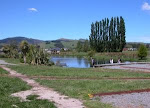Did you know that crunches or sit ups will not give you the “abs” you
desire in fact they may be causing you damage? Did you know that certain
exercises done in boot camps on a regular basis could also be doing you harm?
Burpees, star jumps, wide legged squats, sit ups, full push ups, bicycles, the
list that goes on and on.
1 in 3 women suffer from urinary leakage. If you have had a baby, I am
sure that this news comes as no surprise to you.
All women need to do pelvic floor exercises.
Pelvic floor muscles form the base of the group of muscles commonly
called the ‘core’. These muscles work with the deep abdominal (tummy) and back
muscles and the diaphragm (breathing muscle) to support the spine and control
the pressure inside the abdomen. The pelvic floor muscles play an important
role in bladder and bowel control, supporting the pelvic organs and sexual
function in both men and women. During exercise, the internal pressure in
the abdomen changes.
For example; when lifting a weight - the internal pressure increases,
when the weight is put down – the internal pressure returns to normal.
In an ideal situation the pressure is regulated automatically. For example, when lifting a weight, the
muscles of the core work together well- the pelvic floor muscles lift, the
abdominal and back muscles draw in to support the spine, and breathing is easy.
In this scenario, the pelvic floor muscles respond appropriately to the increase
in abdominal pressure. If any of the muscles of the ‘core’, including the
pelvic floor, are weakened or damaged, this coordinated automatic action may be
altered. In this situation, during exercises that increase the internal
abdominal pressure, there is potential to overload the pelvic floor causing
depression.
If this happens many times during each exercise session, this may
eventually strain the pelvic organs and result in loss of bladder or bowel
control, or pelvic organ prolapse. If a problem already exists, then pelvic
floor symptoms can potentially be worsened.
You are at highest risk of pelvic floor problems if you are in one or
more of the groups below.
- pregnant and postnatal women
- women who have had a baby
- menopausal and post menopausal women
- women who have had gynaecological surgery (e.g. hysterectomy)
- men who have had surgery for prostate cancer, and
- elite athletes (e.g. runners, gymnasts, trampolinists).
- you regularly lift heavy weights (e.g. at the gym, or as part of your job)
- you strain often to empty your bowels (constipation) · you have a chronic cough or sneeze
- you are overweight or have a Body Mass Index that is over 25
- you have had trauma to the pelvis area (e.g. a fall, pelvic radiotherapy)
- you have a history of back pain
If you are in one of the ‘at risk’ groups above or if you have symptoms
of pelvic floor problems, it is important your exercise program is pelvic
floor safe. Protecting your pelvic floor now will save you problems in the
future.
How do you engage your pelvic floor properly?
If you are unsure, talk to a woman’s health & wellness
professional who can help to teach you how to activate the pelvic floor muscles
correctly. If you are returning to exercise after having a baby or after
gynaecological surgery, you must find a trainer who can guide and support
you the right way - one who knows the pre and post baby body and pelvic floor.
If you have had surgery you will need to ensure you train correctly for the rest of your life to avoid the need for further surgery down the track.
The good news is that you can get your body back after having babies, you can exercise again
after surgery and you will and can start to feel and look amazing!
The trick is to do the right training for your body and not rush back
into what you used to do when you were unaffected by any pelvic floor weakening.
I wish you all the best in your training and if you ever need any more
information, please don’t hesitate to contact me.
Fiona Myers –Personal Trainer – Empowering Women through Health &
Fitness (your local women’s health & fitness expert Halswell based 1 on 1
& buddy fitness training)
e. info@ptfit.co.nz
*References/ Source – some information was shared with your from:Pelvic
Flaws-Lisa Yates –Oh Baby Magazine & The Pelvic Floor & Core Exercises
– www.pelvicfloorfirst.org.au


I do believe all of the ideas you've offered to your post. They are very convincing and will definitely work. Nonetheless, the posts are too short for newbies. May you please lengthen them a little from next time? Thank you for the post.
ReplyDeleteTOSHIBA PVM-375AT